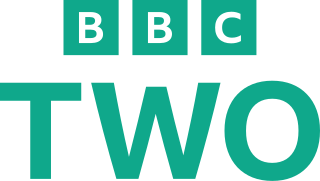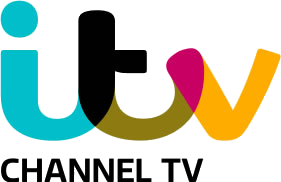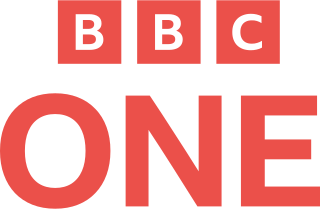
BBC Two is a British free-to-air public broadcast television channel owned and operated by the BBC. It covers a wide range of subject matter, with a remit "to broadcast programmes of depth and substance" in contrast to the more mainstream and popular BBC One.

ITV Channel Television, previously Channel Television, is a British television station which has served as the ITV contractor for the Channel Islands since 1962. It is based in Jersey and broadcasts regional programme for insertion into the network ITV schedule. Until November 2011, Channel Television was one of four ITV companies independent from ITV plc alongside the two STV regions in Scotland and UTV in Northern Ireland. The station has been owned by ITV plc since 2012 and the licence was transferred to ITV Broadcasting Limited in March 2017.

BBC One is a British free-to-air public broadcast television channel owned and operated by the BBC. It is the corporation's oldest and flagship channel, and is known for broadcasting mainstream programming, which includes BBC News television bulletins, primetime drama and entertainment, and live BBC Sport events.

SVT1 is the primary television station of the Swedish public service broadcaster Sveriges Television in Sweden.

UTV is the ITV region covering Northern Ireland, ITV subsidiary and the former on-air name of the free-to-air public broadcast television channel serving the area. It is run by ITV plc and is responsible for the regional news service and other programmes made principally for the area.
BBC World Service Television, often abbreviated to WSTV, was the name of two BBC international satellite television channels between 1991 and 1995. It was the BBC's first foray into worldwide television broadcasting. In Europe, it was the successor to BBC TV Europe, which it replaced on 11 March 1991. The service was also launched in Asia as a 24-hour news and information service with minor differences, a precursor to BBC World News, launched on 14 October 1991.

The BBC One Balloon idents were a series of idents used on the British TV channel BBC One from 4 October 1997 to 28 March 2002. The balloon theme replaced the computer-generated spinning globe that had been used as the main ident on the channel since 1991, and marked a radical departure from the traditional spinning globe which had been the channel's primary identity since 1963. It launched on the same day as a BBC-wide rebrand, and thus the new idents also carried the new BBC logo. The channel's name also changed from BBC1 to BBC One. This was the last ident set used by the channel when it fully closed down; the last proper closedown took place in the evening hours of 8 November 1997. Starting the following evening, BBC News 24 would broadcast on BBC One during closedown, which continues today.

The BBC One "Rhythm & Movement" idents were a set of on-screen channel identities designed by Lambie-Nairn and used on BBC One from 29 March 2002 to 7 October 2006. They replaced the balloon idents, and spelled the end of the much recognised globe identity by the BBC, which had been used in various ways since 1963.

MTV Rocks was a British pay television music channel that was operated by ViacomCBS Networks UK & Australia. Its programming consisted of 24-hour non-stop rock/alternative music.
The history of BBC television idents begins in the early 1950s when the BBC first displayed a logo between programmes to identify its service. As new technology has become available, these devices have evolved from simple still black and white images to the sophisticated full colour short films seen today. With the arrival of digital services in the United Kingdom, and with them many more new channels, branding is perceived by broadcasters to be much more important, meaning that idents need to stand out from the competition.
The ITV television network in the United Kingdom began as a group of regional stations, each with their own identities. Each station used its own idents to create an individual identity.

A clock ident is a form of television ident in which a clock is displayed, reading the current time, and usually alongside the logo of that particular television station. Clock idents are typically used before news bulletins and closedown, though in the past quite commonly preceded regular programming. In the United Kingdom, it is also very much associated with schools programming.

Minimax is a European pay television channel aimed at children, headquartered in Hungary, and broadcasting to 11 Central European countries. The channel was also broadcast in Spain from 1994 to 1998 and Poland from 1999 to 2004. Minimax's policy goals include edutainment and non-violent programs.

Disney Channel was an Italian pay television channel that was owned and operated by The Walt Disney Company Italy. It was launched on 3 October 1998, and its programming consists on original Disney Channel series and third party programming acquired by the network.

ITV Wales and West, previously known as Harlech Television (HTV), was an ITV franchise area in the United Kingdom until 31 December 2013, licensed to a broadcaster by the regulator Ofcom.
The logo of the BBC has been a brand identity for the corporation and its work since the 1950s in a variety of designs. Until the introduction of a logo in 1958, the corporation had relied on its coat of arms for official documentation and correspondence, although it rarely appeared onscreen. With the increased role of television for the BBC in the 1960s, particularly after the foundation of the ITV network, the corporation used its logo to increase viewer familiarity and to standardise its image and content. The logo has since been redesigned a number of times, most recently in 2021 with the BBC blocks, a logo designed to work across media. From 1958, there have been six different BBC logos. The first logo of the network was used from 1958 to 1963, the second from 1963 to 1971, the third from 1971 to 1992, the fourth from 1988 to 1997, the fifth from 1997 to 2021, while the sixth and current logo was adopted in October 2021.
Throughout the years, Children's BBC, and later CBBC and CBeebies, have used a number of different identities. The branding of the stranded service is distinctive both in the past and at present.
BBC Four, and its predecessor BBC Knowledge, are both channels operated by the BBC as cultural and knowledge based channels. Their visual identities therefore have been a result of this aim.
The presentation and the identities of the BBC News channel in the UK alongside its international counterpart and the BBC Parliament coverage channel use specific identities that demonstrate their remit and purpose.
This is a timeline of the history of the British broadcaster Channel Television. It provides the ITV service for the Channel Islands.











